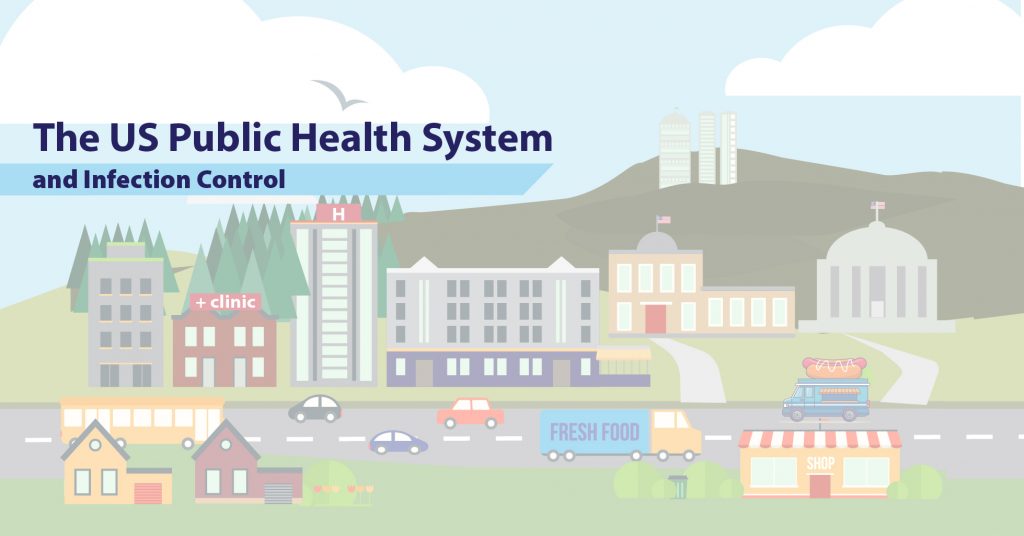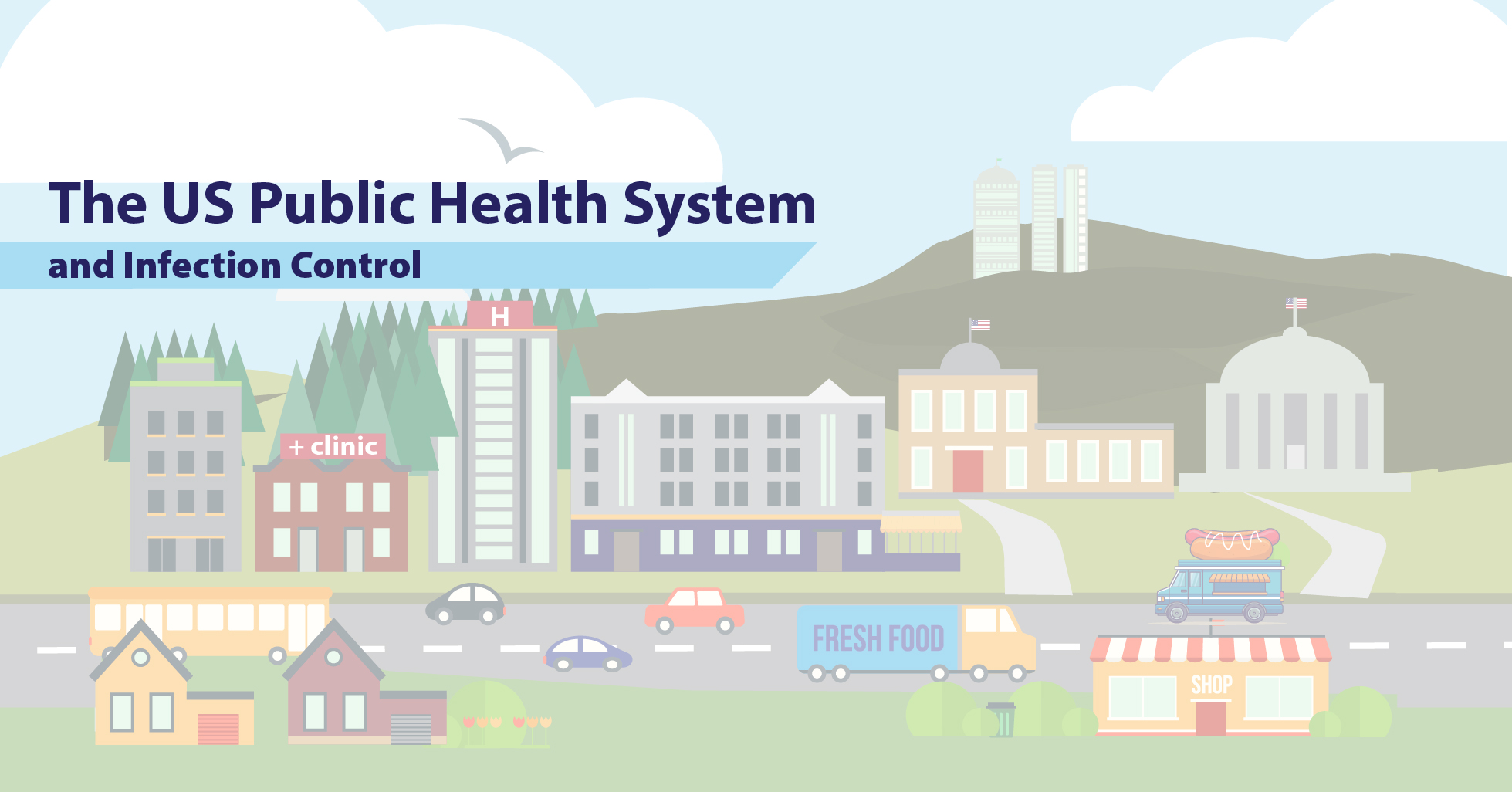
The Public Health System and Infection Control
 In Washington, a panel is meeting to discuss the future of the US Public Health System. Public health systems came under increased scrutiny during the COVID pandemic, spurring the panel to convene and determine ways to make the system more efficient and effective. This is no simple task. The public health system is a network of public, private, and voluntary agencies whose shared goal of community well-being belie the complicated structure and organization behind them. In today’s post, we’ll take a closer look at the goals of public health, the entities that make up the public health system, and the way they intersect with hospital infection control.
In Washington, a panel is meeting to discuss the future of the US Public Health System. Public health systems came under increased scrutiny during the COVID pandemic, spurring the panel to convene and determine ways to make the system more efficient and effective. This is no simple task. The public health system is a network of public, private, and voluntary agencies whose shared goal of community well-being belie the complicated structure and organization behind them. In today’s post, we’ll take a closer look at the goals of public health, the entities that make up the public health system, and the way they intersect with hospital infection control.
Let’s start with some quick statistics. On the federal level, there are 11 divisions that include public health: 3 in human services [including the Agency for Healthcare Research and Quality (AHRQ) which collects data on hospital associated infections] and 8 in the U.S. Public Health Service [including the Centers for Disease Control and Prevention (CDC)]. At the state level, each state, territory and tribal area has a Health Department, some of which run all the local health departments and some of which serve only as a hub for decentralized local health departments. A local Board of Health is responsible for oversight, policies, regulations, strategic planning, and setting priorities. All in all, there are about 3,000 local health departments in the United States.
So what are the responsibilities of these health departments? There are ten essential services provided by this combination of public, private, and voluntary agencies which can be grouped under three main categories:
- ASSESSMENT Monitoring health status through community health assessments and compiling registries of health data • Diagnosing and investigating outbreaks, both in the community and in health facilities
- POLICY DEVELOPMENT Inform, educate and empower the community through outreach and programming • Mobilize community partnerships to maximize efficiency and coordinate work effort • Develop policies and strategic plans to achieve health goals
- ASSURANCE Enforce laws and regulations that protect community health • Link community members to resources and needed services • Assure access to quality care to all populations • Train public health workforce • Evaluate public health services to assure quality
In short, the public health department prevents illness and improves health in almost all aspects of our lives. Here are just a few examples: Adult and child immunization programs, restaurant food safety inspections, investigating outbreaks in day care centers, screening for chronic conditions, domestic violence prevention programs, assuring safe drinking water, prenatal care, parenting classes, emergency response and anti-smoking campaigns. The list goes on and on!
How does the public health department impact hospital-associated infections (HAIs)? Through the many agencies that work with hospitals, such as the CDC, AHRQ, as well as the Centers for Medicare and Medicaid Services (CMS), medical facilities are supported in their work to reduce preventable infections. Public health agencies collect and analyze data, set benchmarks, and even leverage financial penalties in a concerted effort to reduce HAIs. The local or state health department will investigate outbreaks and coordinate with other health departments as needed.
One of the aspects of public health examined by the panel (the bipartisan Commonwealth Fund Commission on a National Health System) is the notion that public health in our country should be more centralized, enabling federal public health agencies to set policies for states and localities. At this time, federal involvement is by invitation only, unless multiple states are affected. The panel proposes that more centralization would allow for more standardization in data collection and coordination. Thanks to the AHRQ, national collection and analysis of HAI data is already centralized and allows citizens access to valuable information about their local hospitals. The panel, as well as Congress, are now debating whether this approach to centralization could have more sweeping impact. Stay tuned for updates as this national conversation continues!
